#Mobile Data Abroad
Text
Unlock a world of seamless connectivity with eSIM Cards. Stay connected while traveling globally without changing physical SIM cards.
Say goodbye to roaming charges and experience hassle-free communication wherever you go. Your passport to instant, affordable, and borderless connectivity awaits – explore the world with eSIM Cards.
Click on the Link for More Info.
#Airalo eSIM#Travel SIM Cards#International Roaming#Global Connectivity#eSIM Technology#Travel Tech#Digital Nomad#Travel Essentials#SIM Card Alternatives#Airalo Review#Mobile Connectivity#Roaming Solutions#Tech for Travelers#Digital Travel#Mobile Data Abroad#Virtual SIM#Airalo eSIM Plans#Travel Gadgets#eSIM Benefits#Travel SIM Comparison#Global Roaming#Airalo App#Mobile Network Abroad#SIM-Free Travel#Affordable Roaming#eSIM vs. Physical SIM#Tech for Jetsetters#International Data Plans#Mobile Connectivity Solutions#Airalo Coverage
0 notes
Text
o dam
#uh idk if i can use th internet when im at germany#cuz idk if i hav the abroad mobile data thingymabob#welp#i do hav stuff to draw n do tho so:)
0 notes
Text

I used my mobile data too close to the sun.
#uh oh#i was supposed to have limitless data no one told me it doesnt count in other countries#but since when IS 500mb the 20% of 33GB?#fuck you yettel#i pay for limitless mobile data and you only give me 33 gb abroad?
1 note
·
View note
Note
Hello, I'm sorry to bother you. If you would share the word about what's currently happening in Bangladesh, I would really appreciate it. I've been trying to talk about it but word isn't going around enough.



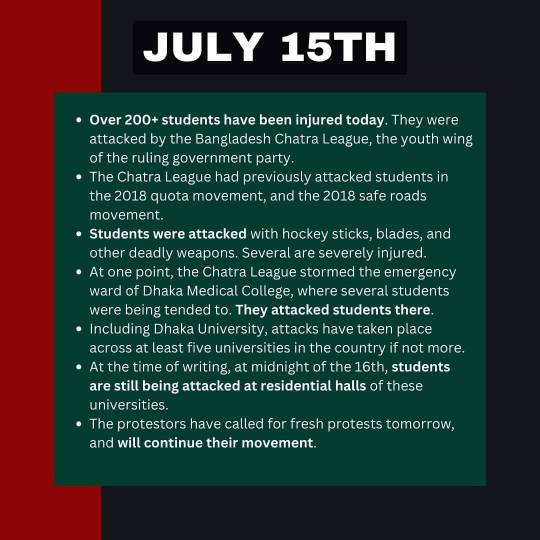
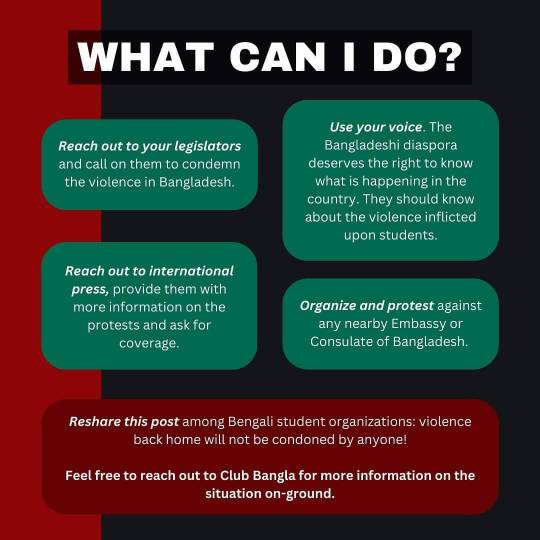

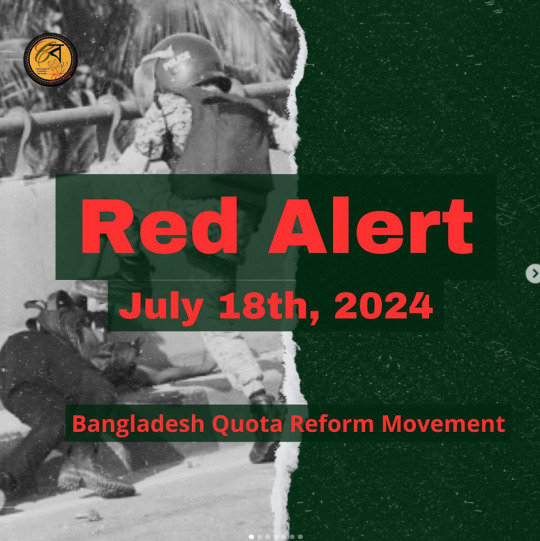
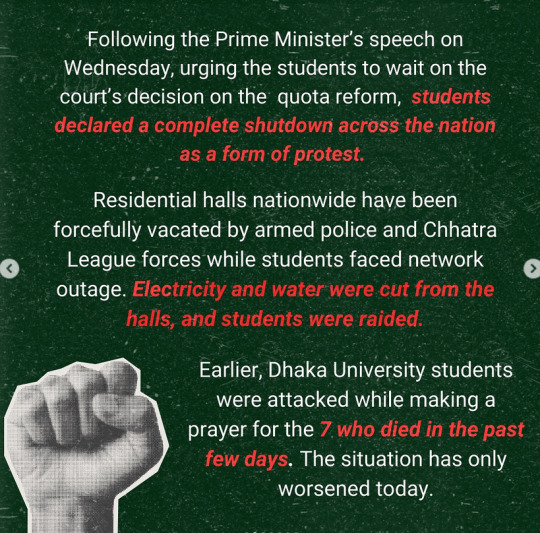
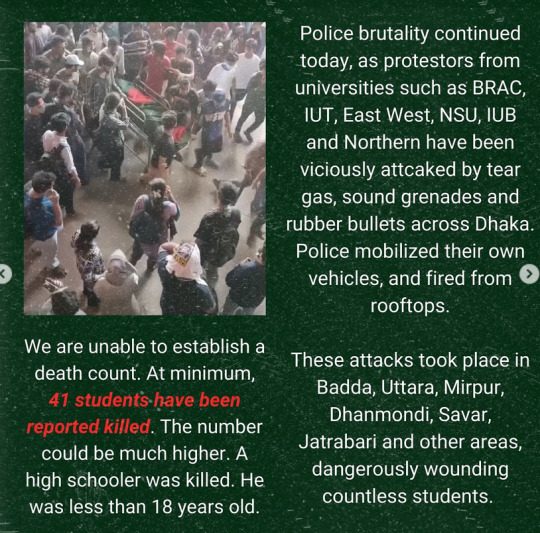
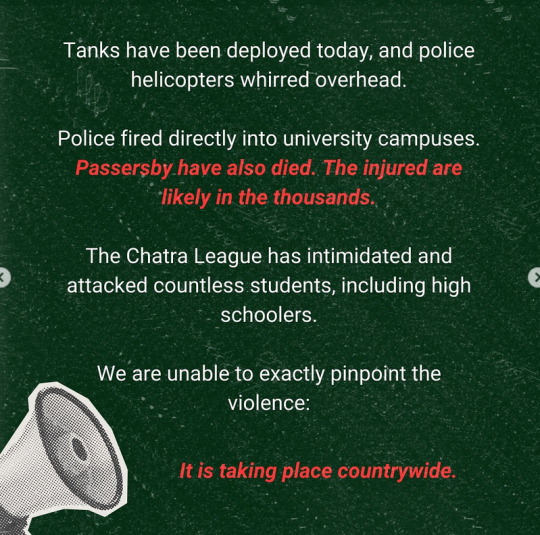
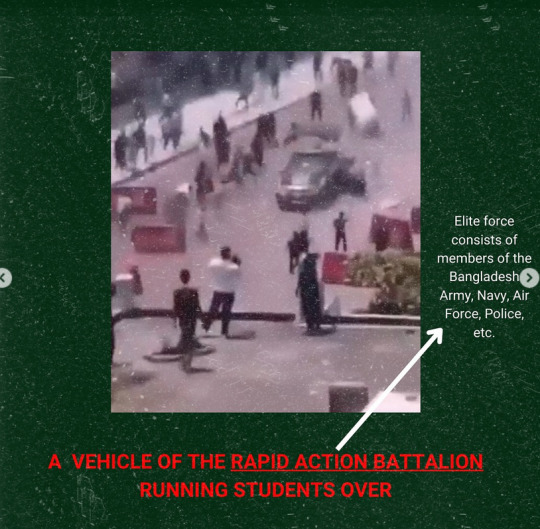

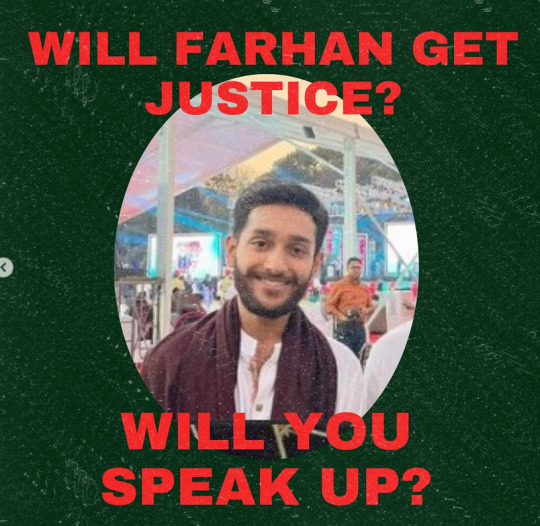
https://www.instagram.com/cubangla/
On 18th July, Friday, there was a near total network blackout. Internet and mobile data have been nearly fully shut down, and mobile networks have been restricted heavily as well. The government has opened fire on protestors and civilians alike. We, as Bangladeshis living abroad, can barely contact our friends and family back in the country. Last update was an ongoing curfew going on, with threat of open fire on anyone seen outside during it.
Please help spread the word.
I'm currently visiting family so I hadn't seen this, but this is real and this is happening.
https://www.washingtonpost.com/world/2024/07/19/bangladesh-demonstrations-police-hasina/
85 notes
·
View notes
Text
Is slovenia weird/outlier by having enough data in our mobile phone plans that we DON'T need free wifi everywhere we go?
I had 8GB of data in my former data plan, now I have even more, and I went for a plan on the cheap side. I never come even close to using all of it in a month (but then again I don't watch whole movies on it)
Every time I travel abroad, every hotel and restaurant and coffeeshop brags about free wifi, I assume it's a huge selling point? But I never need it, plus it's a safety hazard. My plan includes 2GB of data abroad inside the EU
141 notes
·
View notes
Note
Hello, I'm sorry to bother you. If you would share the word about what's currently happening in Bangladesh, I would really appreciate it. I've been trying to talk about it but word isn't going around enough.
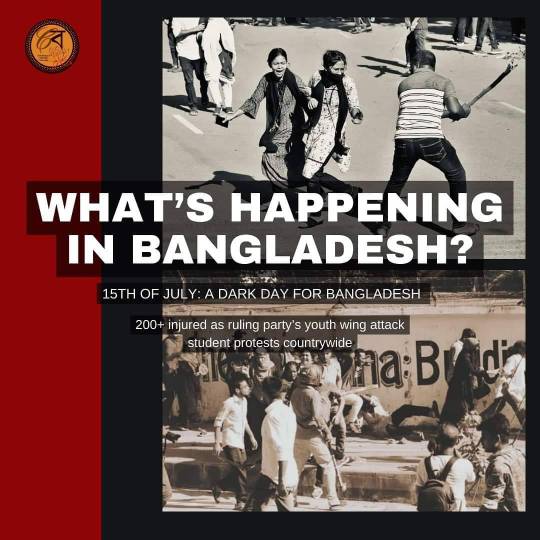


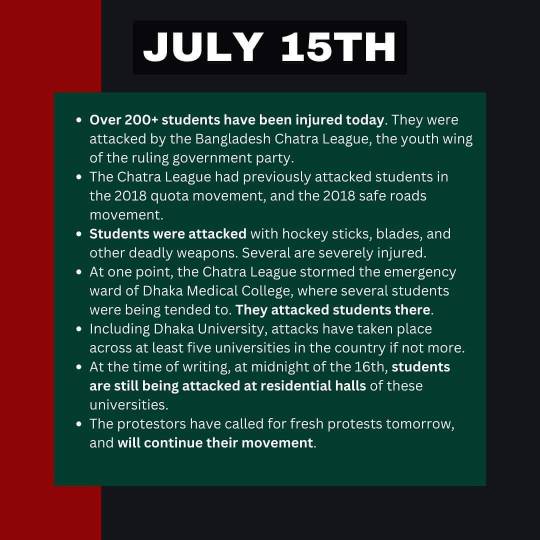


https://www.instagram.com/cubangla/
On 18th July, Friday, there was a near total network blackout. Internet and mobile data have been nearly fully shut down, and mobile networks have been restricted heavily as well. The government has opened fire on protestors and civilians alike. We, as Bangladeshis living abroad, can barely contact our friends and family back in the country. Last update was an ongoing curfew going on, with threat of open fire on anyone seen outside during it.
Please help spread the word.
I rbed another post with these pictures but I'll post this too!! I hope your family is safe
27 notes
·
View notes
Text
A detail about the Peacebreakers in Providence. (translated + spoilers)

Ministry of Foreign Affairs Overseas Research Department Field Survey Team/Peace Breaker
Official activity period: 2098/04~2113/04
A unit that obtains and manipulates information useful to Japan from other countries. Its main mission is to enter other countries, gather information, carry out sabotage operations, and provide weapons and operational support to anti-government organizations who support the Japanese government. Regarding anti-government support operations, operations were carried out through domestic third-party organizations
(Example 1). It has been confirmed that it was provided to and expanded to the government and rebel forces of the former Southeast Asian Union (commonly known as SEAUN) (see corresponding
data 04231 for details).
Through "monitoring"derived from [...]
The members were selected from among the soldiers who belonged to the Special Forces of the National Defense Force, based on the Sibyl System's advanced decisions, and from among them, those who had a particularly strong sense of national pride were selected.
Establishment: Wave After its establishment, the company did some original work. Main strategies and execution records.
2099_Conflict within the Union of Southeast Asia
2111_Rebellion in the Republic of South Asia
2112_Operation Footstamp
2113_Kona Island independence group reduced cropping
Involved in etc. For details, see 67721 data
In June 2118, the decision was made to dismantle the unit, and in the same month, the whereabouts of the unit commander and training staff went missing.
In October 2118, independent activity was confirmed, and it was completely destroyed. To this day, it is said that its range has expanded to include Japan, Northern Russia, and the Russian Federation. Tonami is said to have been the general manager since the company's founding.

■ PB2098 type TUSIMA PS (Peacebreaker Armor)
A powered suit that is standard equipment for the Peace Breaker Corps. It covers the head, upper body, and lower body, and is equipped with heavy armor and assist functions in each part.
Increases the wearer's mobility by 1.25 times.
Visibility is ensured by using cameras in front and behind the head to project images directly onto the eyes using internal scale projection sensors.
It is also equipped with an infrared sensor and 3D prediction function MS2 as an option.
It is possible to carry out operations without securing visibility even under conditions of poor visibility.
Multi-type labeling function installed on the front of the waist
***
Sibyl itself is promoting conflicts to expand itself, and then denying asylum to the refugees which is why they're confined to Dejima/Kyushu. Sibyl lets MFA do the dirty work and it's obvious that Sibyl just turns a blind eye to this because it benefits their colonisation approach.
I wonder what Kogami's thoughts will be when he comes to realise that his "democratisation" in Siam Reap (Psycho Pass Movie) was just a part of Sibyl's grand plan. Also Kona Island? Didn't Rutaganda and his mercenaries live on an island? The knowledge that Sibyl would let the world suffer, after having seen the true effects of it in his journey abroad and that probably every person he met or lost on his journey (including the people that Tenzing lost) was suffering due to Sibyl's duplicity. In Case 3 Novel, Frederica is investigating the Peacebreakers in Tibet-Himalaya and Garcia by extension.
Honestly, Kogami Shinya seeing the horrors of war, trying to help people and then returning to become a cog in the System is a tragic enough ending for me. I guess this was the meaning of that painting in that room. (The Abyss, I assume?)

Anyhow, I'm on my fourth rewatch (first time with subs so thank god I can follow the dialogues), and Sibyl has a knack of grinding my gears (pun intended), I've come to despise the System as much as Kogami.
I'll delve into a proper review later, for now just accept my ramblings. I have 10,000 thoughts on Akane too, who in this movie punched me right in the heart, honestly I don't know how Akane-chan is so strong. I admire her grit.
53 notes
·
View notes
Text
Silence, Siege and Persecution: Venezuela’s Media After the Elections
“Today I heard on the radio: ‘Our programming today will be 100% music, because music is a refuge, a safe place,’” economist Omar Zambrano tweeted a few days after the July 28th elections. In fact, for almost two weeks after the disputed results were announced by the National Electoral Council and spontaneous protests erupted throughout the country, most radio shows –including those with the largest audiences, such as journalists Shirley Varnagy’s and Román Lozinki’s– went off the air.
“These have been difficult weeks for all of us as citizens, including those of us who practice this profession”, Varnagy said in an Instagram post after two weeks of silence. “The circumstances force me to think very carefully about the words I say and write. I don’t live abroad, I’m inside.” Varnagy then announced she wouldn’t return to the radio until September 9th, more than a month after the presidential elections. Lozinski returned on August 26th. “I insist that these have not been easy days for those of us who make a living from the radio,” he said on an Instagram post announcing his return.
But the silence, the veiled messages, weren’t limited to Venezuela’s already highly-censored radio stations – of which more than 150 have been closed down by CONATEL, the government’s telecommunications agency, since 2022 according to the National Press Workers Union (SNTP).
As reports of detentions and passport annulments multiplied after the elections, the silence–usual in television, newspapers and most radio shows–suddenly swayed through social and online media too.
Journalists put their accounts private or altogether stopped tweeting, political podcasts halted and Venezuelan independent media started to publish articles without bylines (as we’ve been doing in Caracas Chronicles).
A week after July 28th, journalist Alonso Moleiro accurately described the ambiance: “The prevailing feeling is fear,” he wrote in the Spanish newspaper El País. “Politicians are hermetic. Interviews are canceled. People close to political leaders change their phone numbers. There is a huge hesitance in WhatsApp groups; Zoom conversations are rare. The police harass citizens looking for data on their mobile phones.”
The crackdown against the press ramped up before July 28th, when CONATEL ordered that public and private internet providers block a series of independent media, watchdogs and fact-checking websites. First, on early July, the government blocked anti-disinformation fact-checkers Es Paja, Cazadores de Fake News and Observatorio de Fake News alongside the media NGO Instituto Prensa y Sociedad de Venezuela (IPYS Venezuela) and VPN service Proton. Then, on July 22, the sites of watchdogs Medianálisis and VE Sin Filtro were blocked alongside independent media El Estímulo, Analítica and Runrunes.
During the same period, Nicolás Maduro repeatedly referred to foreign media agencies –including Reuters, AFP, AP, EFE and CNN– as “garbage” and “hitmen of untruthfulness.” His legislature speaker, Jorge Rodríguez, even engaged in an online brawl with APEX–the Foreign Press Association in Venezuela.
Then, the elections came. And detentions followed.
Since July 28th, 13 journalists and press workers have been detained in the country by state security forces, according to the SNTP (four have been freed, including one on parole). Three of them–including Ronald Carreño, a political prisoner with ties to opposition party Voluntad Popular who had been released last year as part of the US-Venezuela talks–were arrested for belonging to opposition parties. Other detained journalists including showbiz reporter Carmela Longo–who was released on parole afterwards, but charged with terrorism–, La Patilla journalist Ana Carolina Guaita in La Guaira, and photojournalist Deisy Peña in Los Teques, were taken for just doing their jobs.
“Our media outlet has a profile that is very different from the rest and we don’t do hard news,” says Irene (fake name), who works in a small Venezuelan digital outlet. “But in the end, as Carmela’s case shows, anyone can get in trouble for whatever reason now without you necessarily doing anything.” The pattern is changing. Before the elections, detentions were mostly focused on people helping the opposition campaign or participating in it. In fact, the three journalists detained before the elections–Gabriel González, Luis López and Carlos Julio Rojas–had ties to political parties or grassroots political movements. But, since July 28th, repression has drifted towards reporting-focused journalists.
The role of journalists in narrating the people’s rejection of the results announced by the CNE and the coverage on their veracity led to a “policy of silencing, of siege, of persecution” against the press, SNTP Secretary General Marco Ruiz says. Similarly, he says, there’s been a policy of silencing the coverage of protests and anti-government expressions.
And the July 28th elections have not only unleashed detentions. “We have recorded campaigns of hate and criminalization against journalists in different states like Aragua, Portuguesa, Carabobo, Zulia, Bolívar, Táchira,” Ruiz says, “Many of them are now in safekeeping. In other cases, we have had to use extraction procedures and they are outside the country because they were at risk of arrest.”
The situation has also changed the content and internal dynamics of Venezuelan outlets. “Everything we had planned to publish during the rest of the year is now paralyzed,” Irene says, “because now we are not publishing anything that doesn’t have to do with what’s happening, because we think there’s nothing more important.” Some of her colleagues, she says, have also stopped tweeting because of the emotional toll.
Similarly, outlets –including Caracas Chronicles– have faced difficulties to find sources willing to speak on the record or contribute with their analyses. “I can’t find voices willing to give a testimony on what’s happening in Venezuela, they are taking a lot of care”, says veteran Venezuelan journalist César Miguel Rondón, who hosts a radio program in Miami, “No one wants to end up disappeared, in a jail, because of some henchman’s whims… I think we had never seen a situation as ugly and dangerous as this one.”
In fact, many journalists have been affected by the massive annulment of passports that social activists, politicians and NGO members have also reported. “I know of correspondents who had their passports annulled,” says Nancy (fake name), who works as a stringer in Caracas for an international outlet and decided to leave the country after the elections. “I know of other journalists who also left the country under the radar, I know of photojournalists who have decided not to publish political pictures on their social media or asked for credit to be removed, I know of international media outlets who are now solely doing remote work to avoid the risk of going to their offices.”
This is why so many outlets are publishing articles without bylines and the alliance Venezuela Vota resorted to creating the AI avatars of Operación Retuit to broadcast news summary videos without risking their staff.
“We put safety of the team and staff as the top priority of the media outlet where I work and lead,” said Carlos (fake name), the director of a Caracas-based digital outlet. His site is not publishing bylines and has avoided sending journalists to cover protests “due to the risk of arbitrary detention.” The team is also using alternative messaging applications like Signal (blocked in Venezuela after the elections) and working remotely. Carlos says they have also designed a protocol to offer a safehouse to any journalist in his team who is threatened and even to be extracted from the country “in coordination with international networks of journalists specialized in this type of actions.”
For Nancy, journalists in national and regional outlets are at more risk but she doesn’t rule out the possibility of crackdowns on correspondants and stringers. “Now I have an enormous terror I had never felt,” she says, “especially because of how random the decisions seem and how unclear the rules of the game are. It’s basically a roulette and you never know when your turn will be.”
The State has also cracked down against social media and digital communications beyond the work of the press. Checkpoints where officers check people’s phone for pro-opposition content, usually leading to detentions or thousand-dollars extortions, have become common throughout Caracas and the rest of the country after July 28th. In fact, the government has called on Venezuelans to stop using Whatsapp and even blocked X–originally for ten days, but the deadline passed on and the network continues to be inaccessible in Venezuela without a VPN.
“The underlying problem is that WhatsApp is the platform that people used to efficiently disseminate information horizontally” and without censorship during the campaign and post-electoral protests, human rights activist Rafael Uzcátegui says. “Censorship in social media is not only to try to avoid people from expressing themselves, or being afraid to do so, but also to neutralize their autonomous capacity to establish links with others that bypass the state” and its media ecosystem.
In fact, the government has even threatened influencers who publicly supported María Corina Machado.
“You have to decide whether you want to continue your careers, first of all, with your families in Venezuela”, Maduro said, addressing celebrities–particularly Miami-based Youtube humorist Lele Pons–and social media stars that hosted lives and podcast episodes with Machado.
Maduro even accused Pons of conspiring to “impose” a government in Venezuela.
In fact, on July 31st during a press conference with international media, Maduro said “TikTok and Instagram are in the hands of imperialism” and “they are manipulating [people] to bring a civil war to Venezuela.” He then lambasted international agencies: “Do not insist on your agenda to bring war to Venezuela,” he said, “you, the international media, are responsible for the death and wars in Afghanistan, Iraq and Libya.”
A month after the elections, Maduro charged against the media again: this time, he accused local outlets TalCual, Efecto Cocuyo and El Pitazo of receiving USAID funds and of being part of the alleged conspiracy that the government blames for the recent nationwide power outage.
“This is an informal curfew against journalists, imposed de facto,” Ruiz says, “to dismantle the journalistic profession and the media in practically all the states of the country.”
“What I fear the most is the government’s level of evilness. I know they are capable of going against children and the elderly alike, and I will die if they touch my parents or my child,” says Nancy, who is unsure about returning to Venezuela, “this changed. And very quickly.”
16 notes
·
View notes
Text
By Brett Wilkins
Common Dreams
Sept. 13, 2023
"It's clear that the crisis is spiraling out of control and the policies of your administration with regard to fossil fuels fail to align with what the science tells us must happen to avert calamity."
In an open letter published Wednesday, around 400 scientists implored U.S. President Joe Biden to endorse the demands of this weekend's March to End Fossil Fuels in New York—which include halting new fossil fuel projects, ending oil and gas drilling on public lands, and declaring a climate emergency.
Noting that "on your first day in office, you issued an executive order pledging that it is 'the policy of my administration to listen to the science' in tackling the climate crisis," the letter's signers lamented that "more than two years later, it's clear that the crisis is spiraling out of control and the policies of your administration with regard to fossil fuels fail to align with what the science tells us must happen to avert calamity."
"With the climate crisis raging all around us—in the form of fires, floods, hurricanes, drought, heatwaves, crop failures, and more—we call on you directly, clearly, and unequivocally to stop enacting policies contrary to science and do what is needed to address the crisis," the signatories added.
The scientists called on Biden to:
Stop federal approval for new fossil fuel projects and repeal permits for climate bombs like the Willow project and the Mountain Valley Pipeline;
Phase out fossil drilling on our public lands and waters;
Declare a climate emergency to halt fossil fuel exports and investments abroad, and turbocharge the buildout of more just, resilient distributed energy (like rooftop and community solar); and
Provide a just transition to a renewable energy future that generates millions of jobs while supporting workers' and community rights, job security, and employment equity.
"We scientists heard the president loud and clear when he pledged two years ago to 'listen to the science' on climate. Yet now we're watching our nation's greenhouse gas emissions spiral out of control while White House policy becomes increasingly unaligned with reality," Sandra Steingraber—an initial signatory of the letter and a senior scientist at the Science and Environmental Health Network"—said in a statement.
"Science says we need to ratchet down fossil fuel extraction—the White House is doubling down," she added. " Scientists are here to say that our data support the demands of this march."
"Given how bad global heating has now gotten, it's simply insane that President Biden still refuses to declare a climate emergency."
Peter Kalmus of NASA's Jet Propulsion Laboratory—another initial signer—said that "given how bad global heating has now gotten, it's simply insane that President Biden still refuses to declare a climate emergency, and indeed, continues to make everything worse by expanding fossil fuels."
"Nothing takes away my hope for humanity's collective future more than Biden's choice to stand with the fossil fuel industry," Kalmus added. "He must pivot and become the climate leader the planet needs, or else he'll continue locking in higher temperatures and ever more irreversible damage to Earth's habitability."
Nearly 800 international, national, and local organizations have endorsed Sunday's March to End Fossil Fuels, which comes ahead of United Nations Secretary-General António Guterres' Climate Ambition Summit and this fall's U.N. Climate Change Conference—also known as COP28—in Dubai. More than 400 marches, rallies, and other climate mobilizations are slated for this weekend.
Our work is licensed under Creative Commons (CC BY-NC-ND 3.0). Feel free to republish and share widely.
#climate action#joe biden#climate protest#climate justice#climate crisis#climate change#fossil fuels#martch to end fossil fuels#climate ambition summit#cop 28#willow project
38 notes
·
View notes
Text
Inbound Insight: Brazil

In this Inbound Insight series article, we look at the Brazilian outbound student mobility and explore the priorities of this student cohort when searching for student accommodation based on data gathered through the Global Student Living Index.
UNESCO figures show that in 2022, Brazil had 87,337 outbound international students. The number of outbound Brazilian students in tertiary education has increased by 50% since 2017; in 2017, there were 58,000 outbound Brazilian students 87,337 in 2022. However, ICEF estimates that in 2023/24, there were at least 110,000 internationally mobile Brazilian students, including those studying the English language abroad.
Argentina, Portugal, Australia, the United States and Canada are the top destinations for students from Brazil.
Continue reading.
3 notes
·
View notes
Text

Russian cruise missile violated Polish airspace
Fernando Valduga By Fernando Valduga 12/30/2023 - 12:15 in Military, War Zones
On December 29, a cruise missile launched by the Armed Forces of the Russian Federation violated Polish airspace during a target attack in Ukraine.
The incident occurred at 7:12 a.m. local time, near the Poland-Ukraine border. According to the Polish Armed Forces, the missile re-entered Ukrainian territory after approximately three minutes in Poland's airspace.
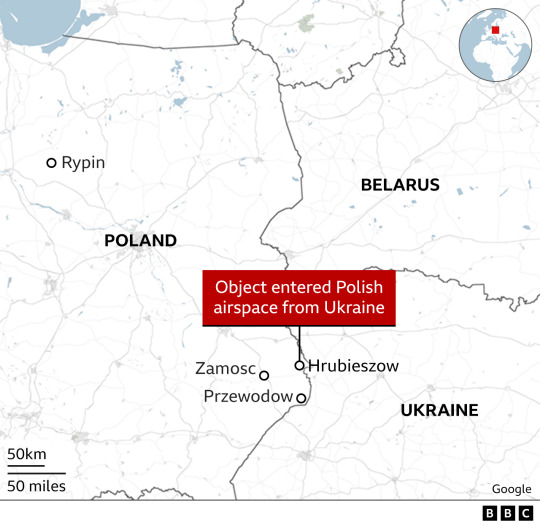
Map showing the place where the Russian cruise missile would have entered Polish airspace on December 29. (BBC infographic)
In the X, the Operational Command of the Polish Armed Forces said that the object entered through the Ukrainian side of the border and was observed by the country's air defense system, penetrating about 24 miles into Polish airspace and disappearing after less than three minutes. He also stated that air defense troops were mobilized to identify and find the object.
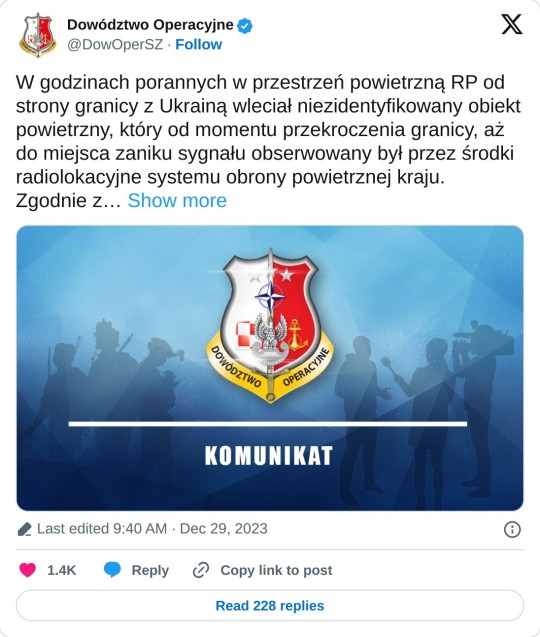
The flight trajectory of the missile was continuously monitored by Polish and Allied radar systems. Polish air defense systems were in readiness and F-16C/D fighters were sent to patrol the area where the missile crossed Polish airspace.
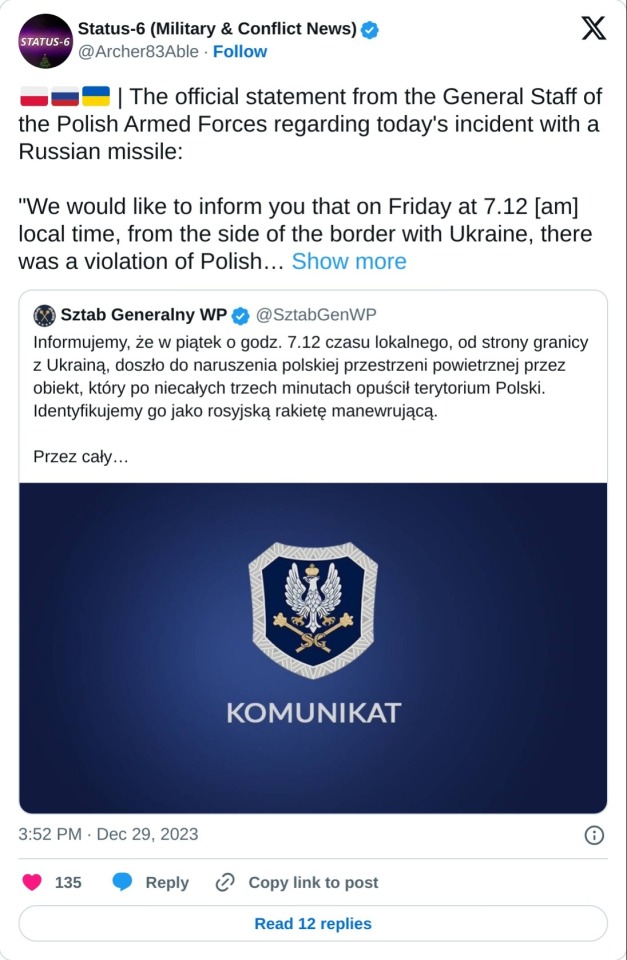
In addition, to verify the radar data, ground forces, air forces and territorial defense troops were mobilized to track the trajectory of the missile on the ground.
President Andrzej Duda called an emergency meeting on security; NATO Secretary General Jens Stoltenberg released a statement on X saying he talked to Duda about the “missile incident” and said that NATO remains vigilant and monitoring the situation “as the facts are established.”

This incident was part of a major Russian attack involving twelve Tu-95MS Bear-H bombers, each launching Kh-55/Kh-555/Kh-101 cruise missiles, along with Tu-22M3 Backfire-C bombers that launched eight Kh-22/Kh-32 supersonic cruise missiles. More than 90 cruise missiles were used in the attack, with most allegedly intercepted by Ukrainian air defenses.
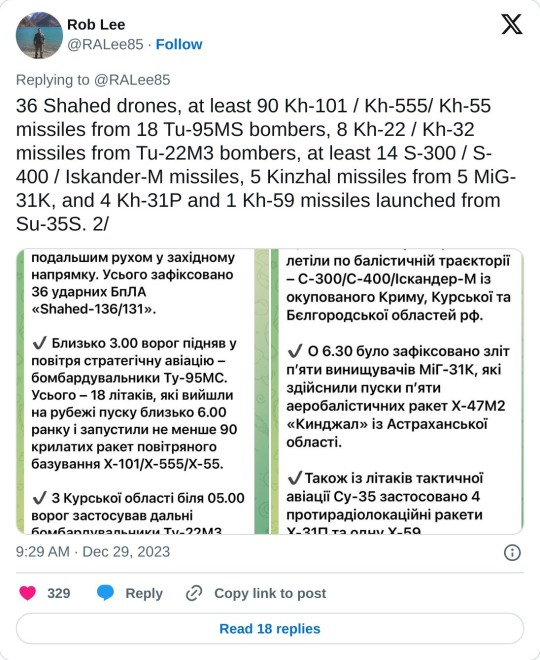
The Ukrainian Ministry of Defense noted that the combined Russian attack used more than 90 cruise missiles of the types mentioned, 36 Shahed-136 attack drones, S-300/400 anti-aircraft missiles in ground attack mode. In addition, five MiG-31K Foxhound fighters each launched a single Kinzhal ballistic missile launched from the air.
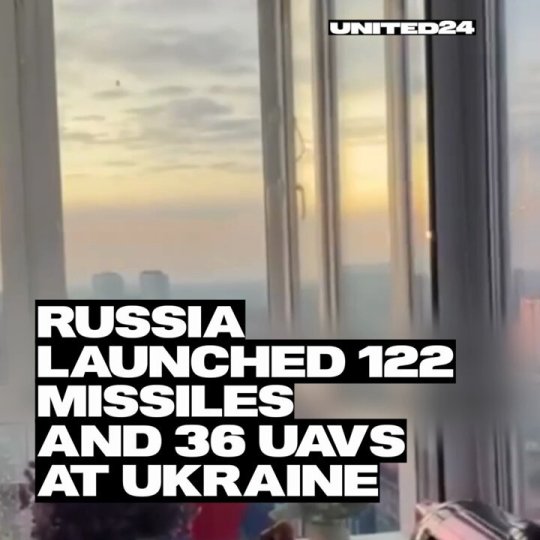
Ukrainian authorities said that at least 144 people were injured and that many others probably remained buried under the rubble.
According to the spokesman of the Ukrainian Air Force, Yurii Ihnat, Russia “apparently launched everything it had” against targets throughout Ukraine. Surprisingly, the attack did not seem to involve any Kalibr cruise missiles launched by ships or submarines, with long-range Russian bombers bearing the weight of the operation.
Tags: Military AviationWar Zones - Russia/Ukraine
Sharing
tweet
Fernando Valduga
Fernando Valduga
Aviation photographer and pilot since 1992, he has participated in several events and air operations, such as Cruzex, AirVenture, Dayton Airshow and FIDAE. He has works published in specialized aviation magazines in Brazil and abroad. He uses Canon equipment during his photographic work in the world of aviation.
Related news
MILITARY
SPRINT: DARPA selects four companies to develop high-speed aircraft and vertical takeoff
29/12/2023 - 18:44
MILITARY
Iran reveals Karrar combat drones armed with air-to-air missiles
29/12/2023 - 13:30
MILITARY
VIDEOS AND IMAGES: How was the first flight of the ANKA-3 stealth drone from Turkey
29/12/2023 - 12:06
INTERCEPTIONS
NATO carried out more than 300 interceptions of Russian aircraft in 2023
29/12/2023 - 10:35
MILITARY
Japan starts sea tests of its second modified helipter carrier for F-35B jets
28/12/2023 - 22:22
MILITARY
New jet coach for the Russian Air Force
28/12/2023 - 17:00
10 notes
·
View notes
Text
Introducing Zetexa eSIM: Your Gateway to Global Connectivity
In this era of fast-tracked globalization, a lifestyle laden with traveling back and forth in a routine was once considered a luxury. As digital technology has evolved over the years, the way we communicate and stay connected in our daily lives across the globe has completely transformed. Say it quietly, though: a major turn of the wheel in this regard has been toward the introduction of eSIM technology. Exemplifying this is Zetexa, a company leading the way in innovation for mobile connectivity. Zetexa eSIM is not just another digital SIM solution; it's a revolution in what we watermark for mobile connectivity. It offers an easy, sustainable, user-friendly solution for global travelers with a ready activation process that takes only five minutes, top security, and flexible payment.

An eSIM is an embedded SIM integrated into your gadgets—meaning, no need for an actual hard SIM. This is a mobile plan technology that allows you to download and activate a plan directly on your gadget just by scanning a simple QR code. Quite flexible, convenient, and reliable: Zetaxa eSIM—whether you are a frequent traveler, a student studying abroad, or a business professional on the go.
Traditional use of SIM cards makes a customer be tied to one place, and this tethering is made even more inconvenient by the fact that a new physical card would need to be inserted into their device if they were to go to another place. It is here that the eSIM offered by Zetexa solves it simply as one global solution that can be turned on and utilized in over 180+ countries. This is just an ideal solution for people valuing connectivity round-o-clock without the headache of gelling up various SIMs or facing compatibility issues with the device.
Total Global Coverage and Reach
Among many other features, the Zetexa eSIM boasts extensive global coverage. In partnership with the best services and telecom companies across the globe, Zetexa eSIM ensures its users receive high-end network coverage in more than 180+ countries across the world. You can travel across continents without having to worry about losing connection or paying expensive roaming charges.
This kind of universal appeal greatly benefits international tourists, who often run the risk of obtaining dubious mobile networks in foreign nations. So imagine not having to bother with drab local SIM cards or being at the mercy of spotty Wi-Fi hotspots but having that seamless connection with Zetexa eSIM, helping users to easily navigate through new destinations, keep in touch with friends and family, and even with work commitments hassle-free while on the go.
What is more, it also offers a range of plans that fit not any but "one's needs." One of them might need higher data limits to work and to stream by, and for someone, it might mean just enough to be able to chat and be on social media. If this is the case, one can be sure that there is a Zetexa plan for that. Their prices are just competitive enough to make users appreciate the top-graded connectivity and get value for their money.
Sustainability and Environmental Impact
On top of the sustainability of most products, Zetexa is a company that very consciously does business in an environment virtually swept with environmental problems. The traditional SIM card model adds to waste, with billions of plastic SIM cards manufactured and thrown away each year. Zetexa eSIM eliminates this waste by doing away with the need for a physical card altogether.
By using the Zetexa eSIM, users make a step in the direction of depleting their environmental footprint. This is much in line with the global trend that is in force right now, in which consumers are more likely to put their support behind companies that bank on sustainable practices. This move by Zetexa to reduce plastic waste is indeed a great leap in the telecommunications sector; it sets a precedent for other companies to follow this model.
Additionally, the movement of physical SIMs through a complex supply chain for their production and distribution adds to carbon emissions. Here, digitization of the whole process, in addition to mere savings in plastic waste, results in lessening the carbon footprint and environmental loads that come with product manufacture and shipping.

Never Expiring eSIMs: Uninterrupted Connectivity
Zetexa eSIMs have one feature: they don't expire. They may have an expiry date, unlike ordinary SIM cards or even some eSIM offers that expire or have a restriction in terms of validity, but a Zetexa eSIM doesn't expire. This will appeal especially to the value-neutral traveler or remote worker who doesn't need to use the SIM card continuously but wants the peace of mind that comes with knowing an option for connectivity will be present should a need arise at any point in time.
This lifetime feature with Zetexa ensures that when you get one eSIM, you will have it forever; it will just be waiting to activate a plan whenever you travel. There is no need to worry about losing your number or having to re-register after a period of inactivity. This kind of flexibility is seen in no other solution, making sure users stay absolutely stress-free with connectivity. Instant Activation and User-Friendly Interface
The eSIM by Zetexa is designed to be activated simply and intuitively to be user-friendly. Immediately after purchasing the Zetexa eSIM, activation involves scanning a QR code from any device one intends to use the eSIM with. On-the-spot activation for services such as these comes as a great relief, especially to travelers who touch down in new countries.
Within just a few minutes, one is able to purchase and activate the connection; there is no headache related to the need for technicality in the process or cumbersome instructions. The Zetexa app can be downloaded from the Zetexa website and is available in both iOS and Android. The process can be followed by anyone with little or no technology exposure. This is a great plus point, as ease of use makes it easier for anybody to become connected. Dedicated Customer Support
Customer support is one of Zetexa's top-notch services. Realizing that users can find difficulties or have questions, Zetexa offers constant 24-hour support for any problem or issue. Be it a connectivity issue or an activation process, Zetexa's support team is on hand to make the experience smooth.
This kind of attention to the customer is very helpful, especially for travelers who could feel at a loss with unknown destinations and have a significantly convenient way of asking for help, only a call or a message away. With the added layer of security on top of everything else, Zetexa eSIM is a truly trusted way to connect worldwide.
Corporate Alliances and Partnerships
The company is able to advance and grow through strong relationships developed within its telecom providers and corporate alliances. By teaming up with global telecom companies, Zetexa enables itself to offer a high-quality network infrastructure; such coverage does not stutter across different regions of the world. This is aimed at allowing the users to experience the high-speed, non-stop connectivity that the Zetexa brand promises.
Other than telecom partnerships, Zetexa was in partnership with other corporations to ensure the provision of the required business needs of customized eSIM solutions. A company with a workforce always on the go will have solutions from Zetexa, under which assurance is a sure bet that their staff and more stay connected from anywhere around the world. These corporate partnerships further allow Zetexa to offer its services with bulk plans and other incentives, hence being a go-to when seeking to make the communication plan within one's business much simpler.
Ongoing Innovation and Personalization
Zetexa is quite a place that consistently deals with innovation and includes updates to services with customers' feedback and advancement in technologies. This customer-centric approach is what puts Zetexa eSIM on the very frontiers of mobile connectivity, with features that are constantly changing to serve user needs.
This is done through the process known as personalization. Noting the diversity of human needs, Zetexa offers tailor-made solutions that meet individual requirements. Whichever data plan is specifically needed, whichever network, and or whatever individual connectivity needs exist, Zetexa will work to ensure a fit is provided.
This tendency towards individualization extends to the user experience as well. Zetexa's app interface is designed rather friendly so users can get their hands down interacting with the eSIM, looking at data consumption, and adjusting plans in accordance with their own needs. It is in this line that this control and customization has given Zetexa the edge over other eSIM providers and established it as the first preference of the appreciative user.
Conclusion
While living in a world where connectivity is very important, Zetexa's eSIM solution is a revolution itself, connecting convenience, sustainability, and global reach. With never-expiring eSIMs, instant activation, and dedicated customer support, Zetexa ensures its subscribers are always connected with the rest of the world. Perfect for frequent travelers, students taking international degrees, or business professionals based on the go, Zetexa eSIM services realize headache-free, uncomplicated communication, keeping you in touch and productive.
In this world of moving sharply towards digital solutions, Zetexa is leading in mobile connectivity solutions that offer innovative and environmental-friendly products. When you choose Zetexa eSIM, it's more than just convenience; it's a choice toward the future.
Visit the Zetexa website to check out their eSIM solutions for a hassle-free global connectivity journey.
3 notes
·
View notes
Text
Fugitive Wirecard COO Jan Marsalek wasn’t just responsible for Germany’s largest financial fraud in history. He was also a decade-long Russian spy.
In the city of Lipetsk, 300 miles south of Moscow, stands a yellow chapel. Somewhat out of place next to a modern mirrored-window building, situated on the lip of a roundabout, the 200 year-old Church of Holy Transfiguration caters to the faithful of a large mining town that dates back to the era of Peter the Great. Inside, Father Konstantin Baiazov performs the customary rites and rituals for his flock. Dark and bearded, with a short, military-style buzz cut, the church’s archpriest’s routine is standard – services twice a day. Father Konstantin inherited the job — and the calling — from his own father, a revered Orthodox priest who, as local legend goes, had challenged the authority of the formidable KGB during Soviet times.
Konstantin, the father of three, used to travel abroad. He liked visiting Europe, and was particularly fond of Rome. However, he has not left Russia since September 2020. Since the fifth of that month, Father Baiazov’s official passport, numbered 763391844, has not belonged to a man of God. Rather, it belongs to someone who wears a different kind of white collar, looks a lot like him, and is the most wanted man in Europe.
For more than four years, Jan Marsalek, the former chief operating officer of the disgraced German financial services company Wirecard, has been living in Russia under this assumed identity, a year-long investigation by The Insider, Der Spiegel, ZDF, and Der Standard has uncovered. Wirecard, the German equivalent to PayPal was once a DAX-30 listed company, one of the wealthiest traded entities on the German stock exchange, with a valuation of $28 billion. Then came June 2020, when, in the midst of an audit, Wirecard could not locate €1.9 billion in assets it claimed were being held somewhere in the world – Russia, the United Arab Emirates or the Philippines. In fact, the money didn’t exist. Wirecard’s worth was predicated on commissions supposedly earned from three companies, Al Alam, Senjo and PayEasy, based in Dubai, Singapore and Manila, respectively. Wirecard money flowed into all three but the only documented flows in reverse existed in the German conglomerate’s imagination. Or, as the now imprisoned former CEO Markus Braun claims, it had been funneled away to a complex web of offshore accounts controlled by his then number two, Jan Marsalek.
Marsalek, the man responsible for overseeing the forging of company records, money-laundering, and extensive espionage and harassment campaigns against the journalists and speculators who exposed the enormity of Wirecard’s graft, fled in a sinuous route from Germany to Austria to Belarus to Moscow on June 19, 2020, at a moment when COVID-19 lockdowns made movement across borders more difficult than usual for ordinary citizens. But Marsalek is not only an internationally accused swindler. He is also an agent of the GRU, Russia’s military intelligence service, and he has been for the last decade. More recently, since his defection to Russia, he has also done jobs for the FSB.
The Insider’s investigation is based mainly on confidential documents, emails, and chat transcripts, as well mobile phone and travel data. Research into Marsalek’s past also included interviews conducted by our consortium partners with people close to the accused. Among these are his mother and his longtime recruiter-handler, whom Der Spiegel met up with in February at a five-star hotel in Dubai.
The never-before-told story of how the Austrian-born “whiz kid” was recruited to Russia’s largest and most notorious spy agency, the GRU, bears all the hallmarks of a genre-bending ham thriller. Sacha Baron Cohen as Bernie Madoff the Bond villain. It is a saga replete with honey traps, MiG fighter jets, erotic models, sinister ex-spooks, even more sinister mercenaries, counterfeit passports, fake priests taking Syphilis tests, and cheap disguises. More ominously, the story also involves surveillance and kidnapping plots, including surveillance targeting a member of the team that investigated Marsalek’s case, Christo Grozev.
5 notes
·
View notes
Text
Most pundits and exit polls predicted a big win for Narendra Modi’s Bharatiya Janata Party (BJP) in India’s massive six-week election that just came to a close.
They were wrong. Instead, many voters in key battleground states cast their ballots for opposition parties, cutting the BJP’s tally of seats in the Lok Sabha, the lower hour of parliament, from 303 to 240.
Together with their coalition partners, the BJP should retain power with a slim majority of 21 seats. Modi will serve a rare third term as India’s prime minister. But for the first time in a decade, both the prime minister and his party no longer look invincible.
So, what went wrong?
It will be a while before detailed post-election surveys are published, with robust data on why Indians voted as they did. But from what we already know, we can identify a few factors that might explain why support for the BJP has waned.
The BJP went into the election campaign claiming great successes in economic management. Under the stewardship of the Modi government, as the party’s manifesto declared, India has emerged as the fastest-growing major economy in the world. It is currently ranked number five and Modi had set the ambitious goal of rising to third by the end of the decade.
The BJP had made other big promises for a third Modi term: to make India more self-reliant and resilient to global shocks, as well as to improve its infrastructure, generate more power and attract more foreign investment in manufacturing.
Yet, what it lacked – and what may have swayed some voters – was a credible plan to boost employment and curb inflation. The BJP’s track record in both areas is not good.
India needs to create jobs for tens of millions of young and ambitious Indians entering the workforce ever year, but it has struggled to do that in recent years. This has led many to move abroad, even to countries in conflict zones.
Moreover, it needs to stabilise prices, which have increased at annual rate of 5–6% in recent years.
Fear and favour
Another issue that likely swayed some voters was the possible fate of positive discrimination schemes for education and public sector employment known as “caste reservations”.
Designed to improve social mobility for historically marginalised caste groups and communities, these schemes have become politically contentious in a society where good schools and good jobs are scarce.
The BJP has long been ideologically sceptical about reservations, arguing – among other things – they are socially divisive, pitting caste against caste and community against community.
Some Hindu nationalists also see these schemes as standing in the way of consolidating all Hindus into one unassailable social and political bloc.
During the election campaign, these arguments were highlighted by opposition parties, which claimed the BJP planned to abolish reservations or even amend India’s Constitution to ban them outright.
And it seems that fear this might have prompted many lower caste Indians to switch their votes to parties pledging to defend reservations, like the Samajwadi Party in Uttar Pradesh.
Modi fatigue
A third factor shaping voter behaviour may well prove to be a loss of enthusiasm for Modi himself.
Modi’s personal popularity has remained very high by both Indian and global standards for more than a decade – and for good reason.
He is a charismatic and effective communicator, but his capacity for reinventing his image has arguably been his greatest asset. At different points in his career, he has been able to project himself as a firebrand, a technocratic moderniser, a humble servant of the people and an adroit diplomat.
Recently, however, Modi has cast himself as a distant, almost priestly and otherworldly figure. In the days before the election results were announced this week, the prime minister withdrew to a beach to meditate for 45 hours. In interviews, he has spoken of being chosen by god for his role.
These actions led at least one opposition leader to comment that Modi was saying “all kinds of things that made no sense”. Some voters may have shared that view.
Modi’s broader Hindu project in doubt
For ten years, the BJP has also worked hard to establish a dominant position in India’s political system. To win over voters, it has improved infrastructure in the cities and extended India’s rudimentary welfare state to improve the lives of women and the rural poor.
Ultimately, however, the BJP aims not just to develop India, but to ensure all aspects of Indian society reflect what it sees as the values of the Hindu majority.
To do that, the Modi government has tried to unite all Hindu voters – around 80% of the population – with high-profile religious and cultural appeals, like the construction of a much-vaunted new Ram temple at the holy city of Ayodhya.
The result of this election suggests this project has not – so far, at least – succeeded. In a striking development, the BJP failed to hold the parliamentary seat (Faizabad) where Ayodhya is located.
It is not yet clear what lessons Modi and the BJP will take from this election. Tethered to coalition partners with more leverage than before, the incoming government will be more constrained than its predecessors. As the dust settles, one thing is clear: this election has transformed India’s political landscape.
5 notes
·
View notes
Text

© Paolo Dala
Traveling On A Budget
My trip to Taiwan back in 2017 is not only a very memorable trip, but it's also a milestone trip. It's the first trip which I fully paid for... This was a very spontaneous trip. Ani, Kat, Mariel and I were having lunch when all off a sudden, Ani told us that round trip tickets to Taiwan were just PhP 5,000.00 (USD 90.00). We all unanimously agreed to book it and the rest was history. Haha...
2017 was when I had my first job and it really scared me to go to a foreign country on a slightly-above-minimum salary. Kat was still in college when we did this trip. It was only Ani who was working for several years. We were on a very tight budget... We stayed in hostels, ate street foods, 95% of the places we visited had no entrance fees (I think the only place we visited with an entrance fee was Taipei 101.), and none of us bought a sim card for internet data. We went around using free maps and free tourist guide brochures from the airport and free WiFi from the establishments.
...I remember only having PhP 8,000.00 (USD 144.00) for that 5 days, 4 nights trip. Only PhP 8,000.00 for all of my expenses in Taiwan! Food, lodging, transportation, everything! And I didn't have any insurance, credit cards, ATM Cards, and relatives that can help me should there be in an unforeseen circumstances where I needed cash... All we really had was courage...
But that was a very fun and life-changing trip for me. I learned how to travel abroad and see a foreign country with minimal money and without a credit card and mobile internet... I mean don't get me wrong, it's OK (highly recommended) to travel with a money and unlimited data. I travel with money and unlimited data nowadays. But I don't think I'll be as brave as I am today to fly, to travel, and to HIKE in a foreign country if didn't experience this trip. Haha.
1 note
·
View note
Text
Sorry I'm not replying to messages etc but I'm busy and my WiFi has been down (I have to pay for mobile data since I've been abroad for too long 😐)
I just want to say that after seeing that clip of Minho dancing to view in Madrid I have decided that I'm not even gonna wait for a Europe tour and if shinee does a local tour, I guess I will be visiting Korea. Fuck having savings, i am spending all that's left of the money I'm earning as an intern rn and no one can stop me 👍 I need to see minho's arms in action irl. And taem's dumb gorgeous face and bammie's everything. And I will be buying a pack of contact lenses stronger than my prescription FYI
#if only the dates won't be during my thesis presentation or some shit like that!! gotta get that degree after all#don't disappoint me sm i am already holding onto pretty much all of my annual leave for this 6 month long assignment#who else can make me go insane like shinee? no one#but also I've been planning to go on holidays somewhere after i submit my thesis and honestly korea wouldn't be so bad#also can i just say. being from Poland and a student i couldn't dream of saving enough moneyin such a short time however#even just interning at a pharma corp in ireland gives me so many more opportunities is actually ridiculous
3 notes
·
View notes